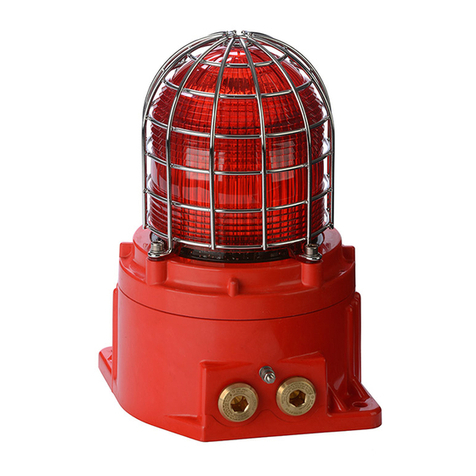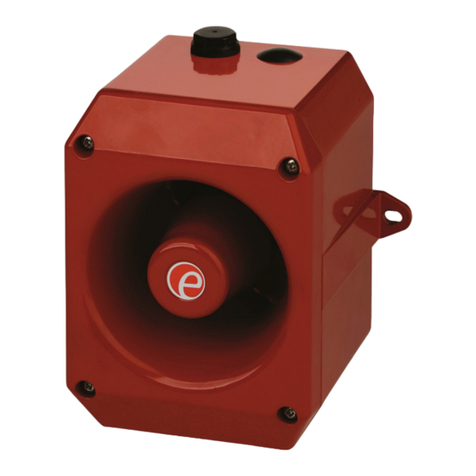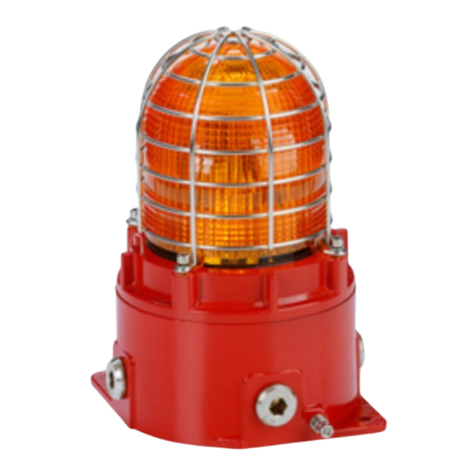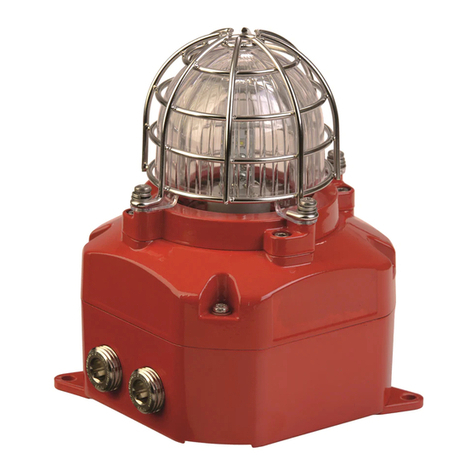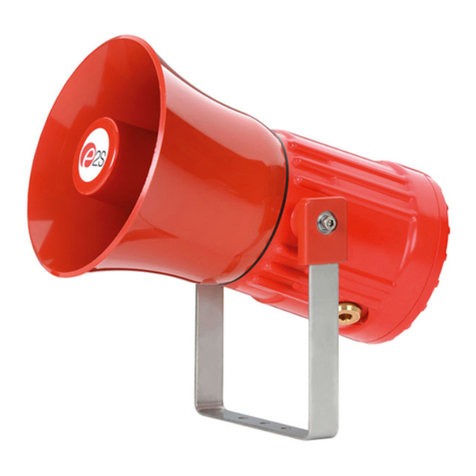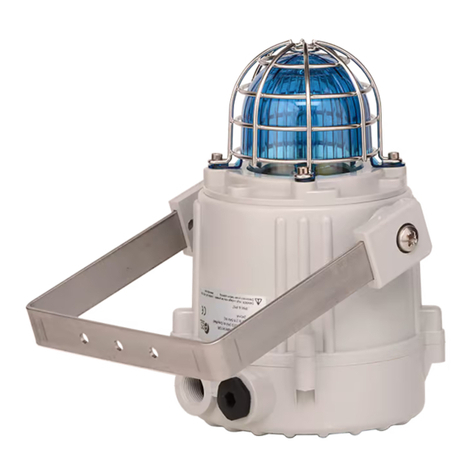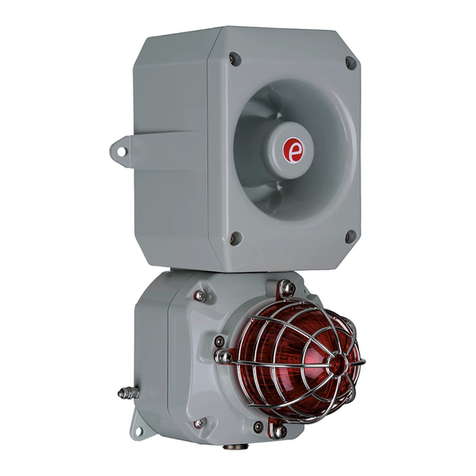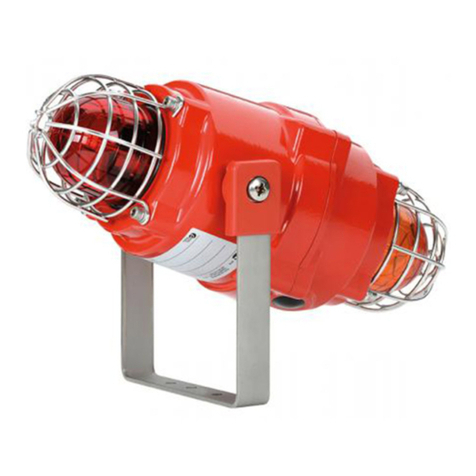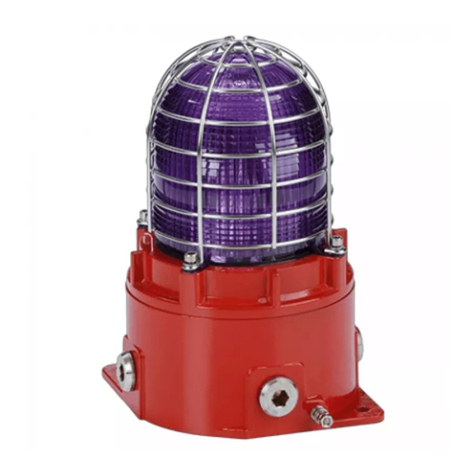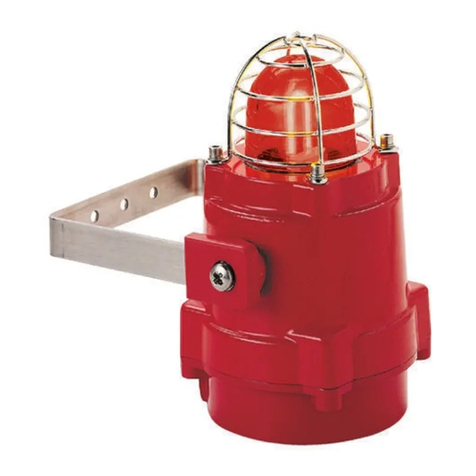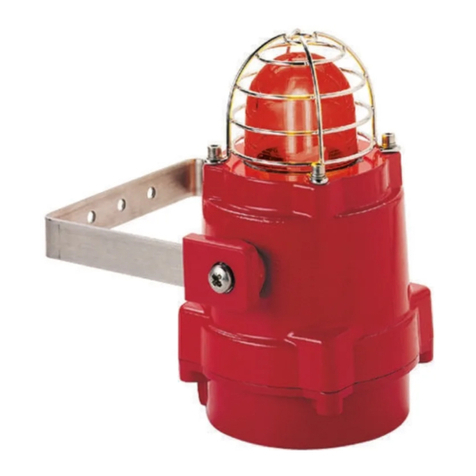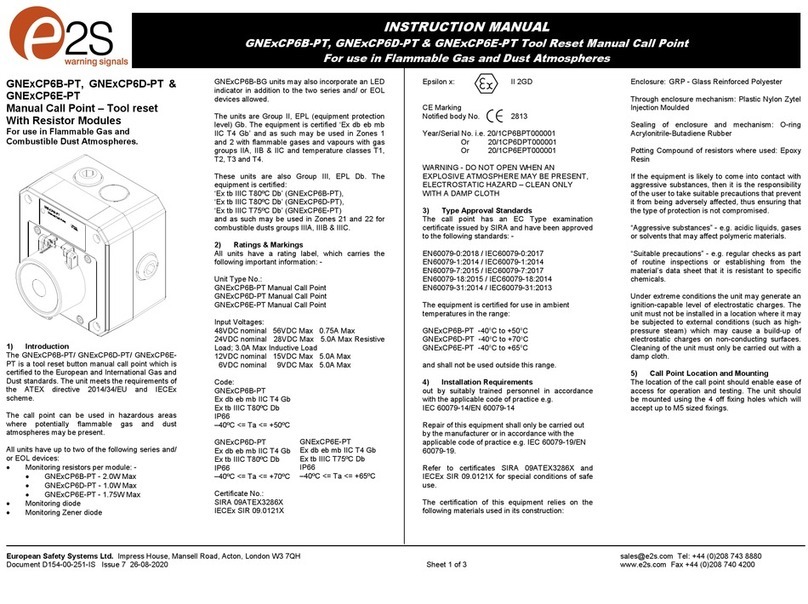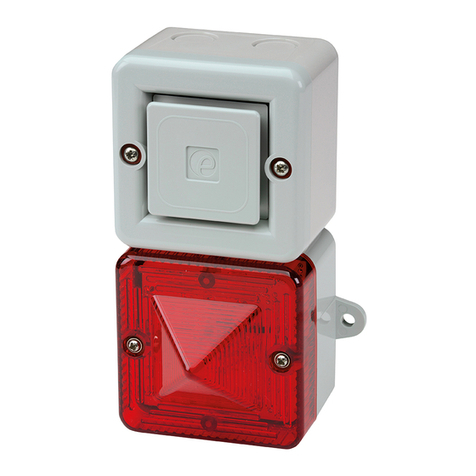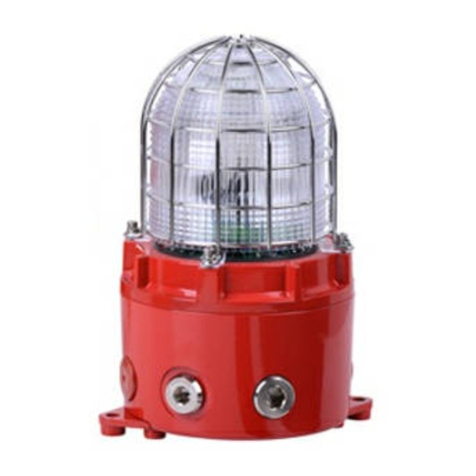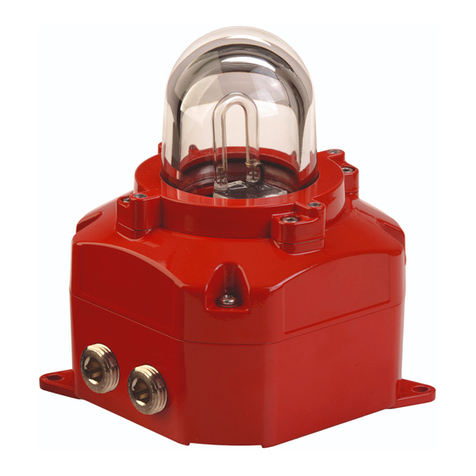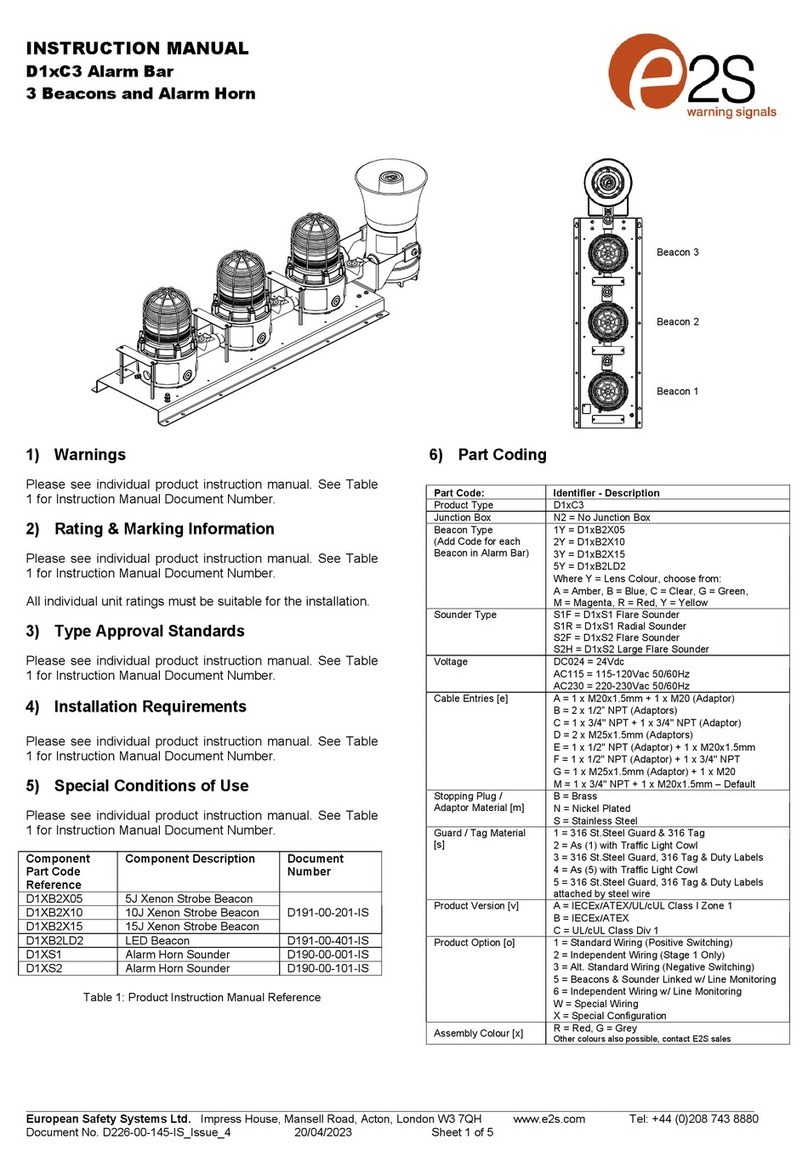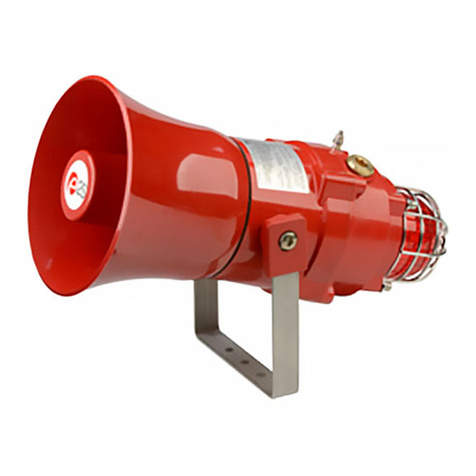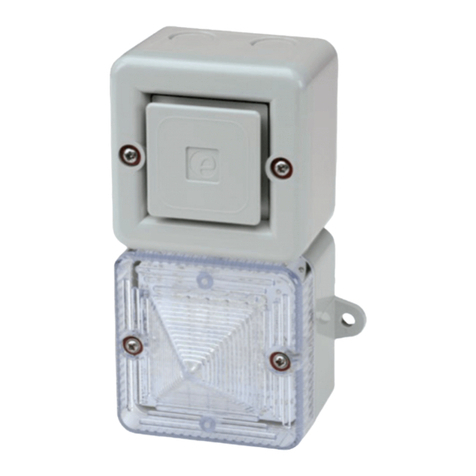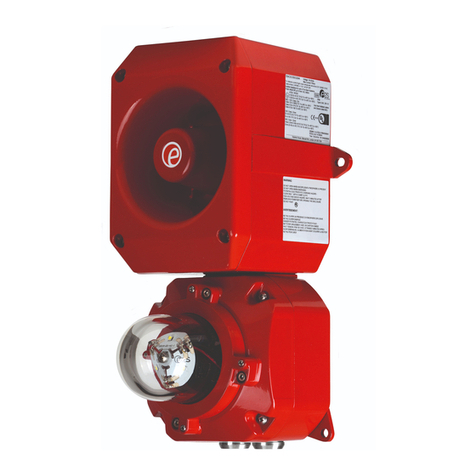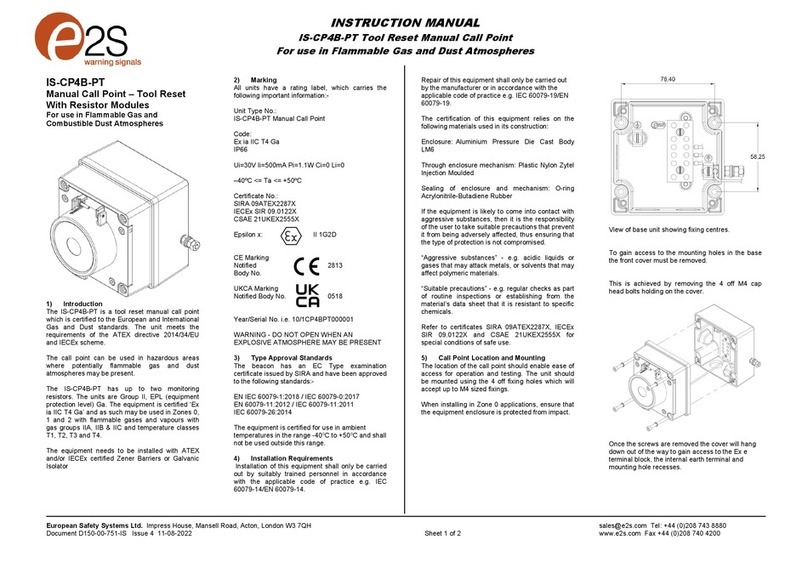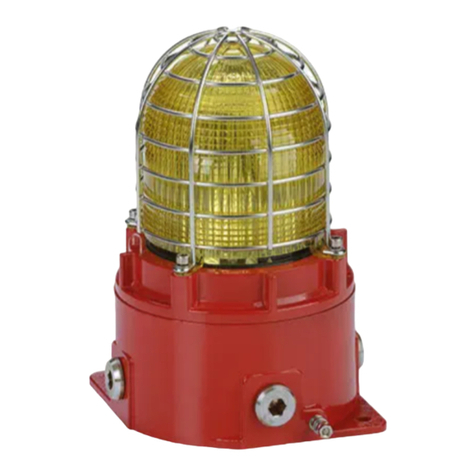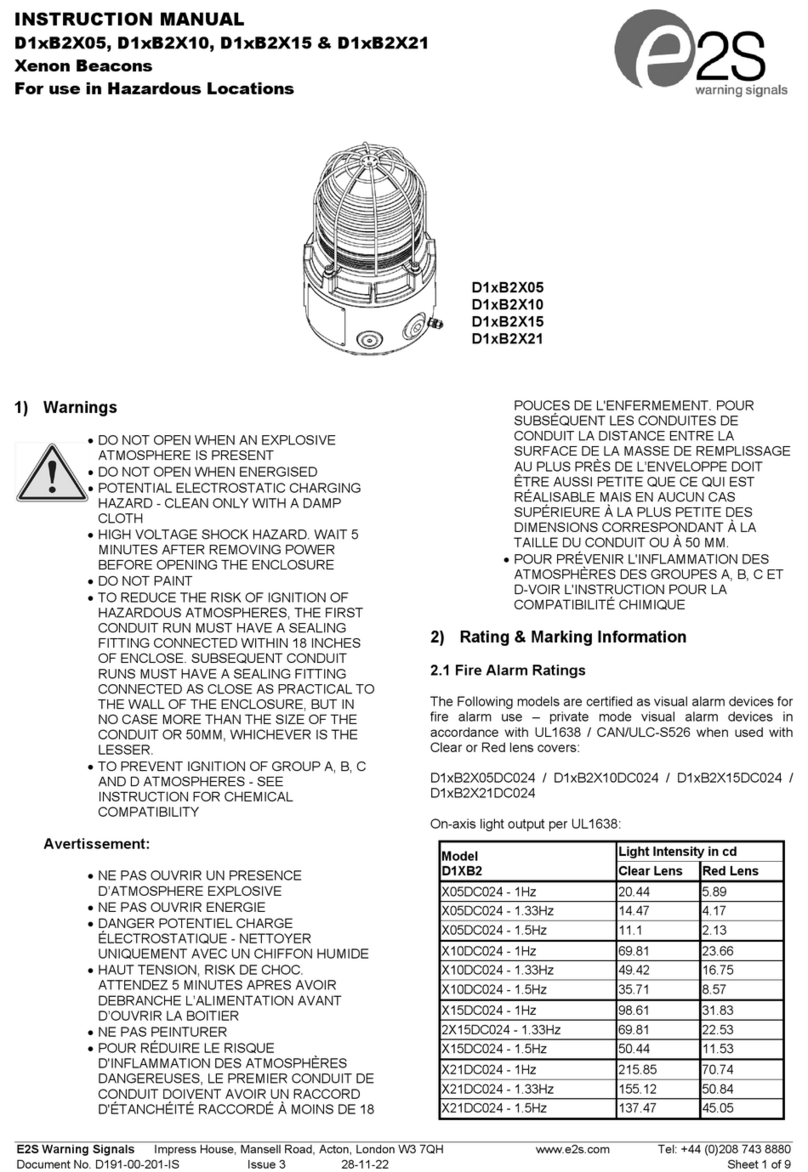
_______________________________________________________________________________________________________________________________
European
Safety
Systems
Ltd.
Impress House, Mansell Road, Acton, London W3 7QH [email protected]m Tel: +44 (0)208 743 8880 www.e-2-s.com Fax: +44 (0)208 740 4200
Document No.D156-00-401-IS Issue 1 08-07-16 Sheet 1 of 5
GNExB2LD2 Flameproof LED Bea ons
For use in Flammable Gas and Dust Atmospheres
1) Introduction
The GNExB2LD2 are flameproof beacons which are certified
to meet the requirements of the ATEX directive 94/9/EC and
the IECEx scheme. The beacon produces synchronised
visual warning signals and can be used in hazardous areas
where potentially flammable gas and dust atmospheres may
be present. The GNExB2LD2 can be used in Zone 1 and
Zone 2 areas with gases in groups IIA, IIB and IIC and
Temperature Classifications of T1, T2, T3, T4, T5 & T6. The
unit can be used in Zone 21 and Zone 22 with dusts in
groups IIIA, IIIB and IIIC and have a surface temperature
rating of T85°C.
2) Marking
All units have a rating label, which carries the following
important information:-
Input Voltage: DC Units 24V
AC Units 230V or 115V
GNExB2LD2
Codes:
Ex db IIC Gb T6 Ta -50°C to +65°C
Ex db IIC Gb T5 Ta -50°C to +70°C
Ex tb IIIC Db T85°C Ta -50°C to +70°C
Certificate No.
DEMKO 15ATEX1448X
IECEx UL15.0003X
“Warnings”
POTENTIAL ELECTROSTATIC CHARGING HAZARD
DO NOT OPEN WHEN AN EXPLOSIVE
ATMOSPHERE IS PRESENT
ALL ENTRIES M20 X 1.5
IF TEMPERATURE EXCEEDS 70ºC AT ENTRY OR 80ºC AT
BRANCHING POINT USE SUITABLE RATED CABLE AND CABLE
GLANDS
3)
Type Approval Standards
The beacons have an EC Type examination certificate and
IECEx certificate of conformity issued by UL and have been
approved to the following standards:
EN60079-0:2012 / IEC60079-0:2011 (Ed 6): Explosive Atmospheres
- Equipment. General requirements
EN60079-1:2014 / IEC60079-1:2014 (Ed 7): Explosive Atmospheres
- Equipment protection by flameproof enclosures "d"
BS EN 60079-31:2014 / IEC 60079-31:2013 (Ed 2): Explosive
Atmospheres - Equipment dust ignition protection by enclosure "t"
4)
Installation Requirements
The beacons must only be installed by suitably qualified
personnel in accordance with the latest issues of the relevant
standards:
EN60079-14 / IEC60079-14: Explosive atmospheres - Electrical
installations design, selection and erection
EN60079-10-1 / IEC60079-10-1: Explosive atmospheres -
Classification of areas. Explosive gas atmospheres
EN60079-10-2 / IEC60079-10-2: Explosive atmospheres -
Classification of areas. Explosive dust atmospheres
The installation of the units must also be in accordance with
any local codes that may apply and should only be carried
out by a competent electrical engineer who has the
necessary training.
5)
Zones, Gas Group, Category, IP Rating and
Temperature Classification
The units can be installed in locations with the following
conditions:
Area Classification Gas:
Zone 1 Explosive gas air mixture likely to occur in
normal operation.
Zone 2 Explosive gas air mixture not likely to occur,
and if it does, it will only exist for a short time.
Gas Groupings:
Group IIA Propane
Group IIB Ethylene
Group IIC Hydrogen and Acetylene
Temperature Classification:
T1 450ºC
T2 300ºC
T3 200ºC
T4 135ºC
T5 100ºC
T6 85ºC (up to 65ºC ambient)
Area Classification Dust:
Zone 21 Explosive dust air mixture likely to occur in
normal operation.
Zone 22 Explosive dust air mixture not likely to occur, and
if it does, it will only exist for a short time.
Dust Groupings:
Group IIIA Combustible Flyings
Group IIIB Non-conductive Dust
Group IIIC Conductive Dust
IP Rating: IP6X to EN/IEC60079-0 and IP66 to EN/IEC60529
Equipment Category: 2G/D
Ambient Temperature Range: -50°C to +70°C
Maximum Surface Temperature for Dust Applications:
85ºC
0518
II 2D
Epsilon x
Equipment Group and
Category:
CE Marking
Notified Body No.

